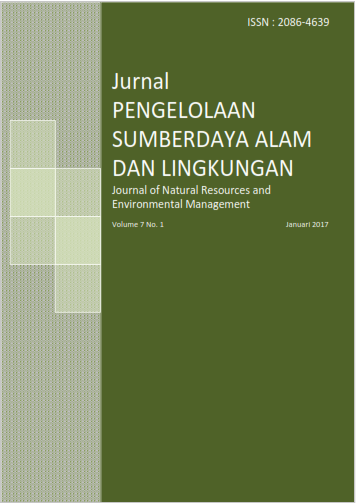PENGGUNAAN KARBON AKTIF DARI AMPAS TEBU SEBAGAI ADSORBEN ZAT WARNA PROCION MERAH DARI INDUSTRI SONGKET
Abstract
References
Bansal, C. R., dan M. Goyal, 2005. Activated Carbon Adsorption. CRC Press, Boca Raton.
Fabon, M. B., G. J. Legaspi, K. Leyesa, M. C. Macawile, 2013. Removal of Basic Dye in Water Matrix Using Actived Carbon From Sugarcane Bagasse. International Conference on Innovations in Engineering and Technology, pp. 198-201.
Farahani, M., S. R. S. Abdullah, S. Hosseini, S. Shojaeipour, M. Kashisaz, 2011. Adsorption-based Cationic Dyes using the Carbon Active Sugarcane Bagasse. Procedia Environmental Sciences 10, pp. 203 – 208.
Hariani, P. L., 2013. Pengolahan limbah cair industri songket menggunakan komposit Fe304 karbon aktif dari cangkang kelapa sawit.Disertasi. Program Pascasarjana, Universitas Sriwijaya, Palembang.
Kusharharyati, T Y., K. W. Deddy, A. Fahmi, 2012. Pengolahan Limbah Pewarnaan Konveksi dengan Bantuan Adsorben Ampas Tebu dan Activated Sludge. Simposium Nasional RAPI XI FT UMS, pp. 51-54.
Li, F., K. Shen, X. Long, J. Wen, X. Xie., X. Zeng, Y. Liang, Y. Wei, Z. Lin, Huang, R. Zhong, 2016. Preparation and Characterization of Biochars from Eichornia crassipes for Cadmium Removal in Aqueous Solutions. Journalpone, pp. 1-13.
Purwaningrum, W., L. H. Poedji, N. T. Khanizar, 2013. Adsorpsi Zat Warna procion Merah Pada Limbah Cair Industri Songket Menggunakan Kitin dan Kitosan. Prosiding Seminar FMIPA Universitas Lampung, pp. 423-427.
Said, M., 2008. Pengolahan Limbah Cair Hasil Pencelupan Benang Songket dengan Metode Filtrasi dan Adsoprsi. Jurnal Penelitian Sains 11, pp. 479-480.
Setianingsih, T., Hasanah, U., Darjito, 2008. Kajian Pengaruh Temperatur Aktivasi dengan NaOH Terhadap Karakter Karbon Aktif Mesopori Berbahan Dasar Limbah Kompleks Lumpur Industri Tekstil Indo. J. Chem 8, pp. 348-352.
Utomo, H. D., R. Y. N. Phoon, Z. Shen, L. H. Ng, Z. B Lim, 2015. Removal of Methylen Blue Using Chemical Modified Sugarcane Bagasse. Natural Resources 20, pp. 209-220.
Yoseva, P. L., M. Akmal, S. Halida, 2015. Pemanfaatan Limbah Ampas Tebu Sebagai Adsorben untuk Peningkatan Kualitas Air Gambu. JOM FMIPA 2: 56-63.
Authors
Authors who publish with this journal agree to the following terms:
- Authors retain copyright and grant the journal right of first publication with the work simultaneously licensed under a Creative Commons Attribution License that allows others to share the work with an acknowledgement of the work's authorship and initial publication in this journal.
- Authors are able to enter into separate, additional contractual arrangements for the non-exclusive distribution of the journal's published version of the work (e.g., post it to an institutional repository or publish it in a book), with an acknowledgement of its initial publication in this journal.
- Authors are permitted and encouraged to post their work online (e.g., in institutional repositories or on their website) prior to and during the submission process, as it can lead to productive exchanges, as well as earlier and greater citation of published work (See The Effect of Open Access).






